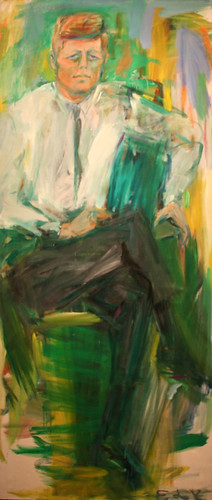Milwaukee students hoped to catch glimpse of President Kennedy on fateful day | Opinion
President Kennedy #PresidentKennedy

In the fall of 1963, the University of Wisconsin-Milwaukee was just seven-years old. During that fall semester, eight upper class students were enrolled in a Political Science seminar focused on the Civil Rights Movement. The memorable March on Washington had taken place just weeks before the start of class. The professor, Wilder Crane, had been a Republican member of the Wisconsin Assembly before joining the faculty.
In addition to being a rigorous professor, Crane was well-connected politically. The semester’s high point consisted of a week of meetings and discussions in Washington, D.C., all focused on civil rights.
The students met with elected officials, Republican and Democrat, and Kennedy Administration officials with responsibilities for civil rights. The head of the Republican National Committee, William Miller, a New York Congressman, informed the group that Republicans had freed the slaves, and what the hell else do they want from us. A token Black appointee in the racially retrograde State Department was so stiff and careful that the students feared for his wellbeing and later voted him the most boring person in the history of the world.
Highlight was Kennedy White House meeting Nov. 22, 1963
On Friday afternoon, our last day, the week’s high point: an actual meeting in the White House. Our session was with Lee White, an assistant to President Kennedy who had come with Kennedy from Massachusetts. We had some hope that we would see the President, not knowing that he was on a quick political fence-mending trip to Dallas, Texas. About twenty minutes into our discussion, an aide handed White a note. He glanced at it, said that something had come up, and that he would have to cut our discussion short. We thanked him and left for our next appointment.
FILE – President John F. Kennedy waves from his car in a motorcade approximately one minute before he was shot, Nov. 22, 1963, in Dallas. Riding with President Kennedy are first lady Jacqueline Kennedy, right, Nellie Connally, second from left, and her husband, Texas Gov. John Connally, far left. The 60th anniversary of President Kennedy’s assassination, marked on Wednesday, Nov. 22, 2023, finds his family, and the country, at a moment many would not have imagined in JFK’s lifetime. (AP Photo/Jim Altgens, File)
Our last meeting that afternoon was at the Pentagon with Alfred Fitt, the first Assistant Secretary of Defense to have civil rights responsibilities. Having never been in the Pentagon, we didn’t know what “normal” was, but there seemed to be a lot of people scurrying around.
Don’t demolish Domes. Central Park Conservancy the blueprint for Mitchell Park.
We started our meeting with Fitt, who informed us that something had happened, and he might have to cut our meeting short. Less than ten minutes later, his intercom buzzed. He picked up: “uh-huh,” “uh-huh.” He hung up the phone and simply said, “President Kennedy is dead.” And he started to cry. We thanked him, quietly filed out, got on our mini-bus and went back to our hotel.
A serene scene in Washington followed JFK assassination
Processing. We all knew that something enormous had happened, but could not process it. That evening a few of us walked down to the White House and experienced one of the strangest scenes imaginable. We weren’t the only ones incapable of processing what had occurred. Thousands of people were just walking back and forth, not saying anything. And helicopters just kept landing and taking off from the White House lawn.
File – Widow Jacqueline Kennedy, left, kneels and reaches out to touch the casket of her slain husband, John F. Kennedy, in the rotunda of the Capitol in Washington, D.C., Nov. 24, 1963. Their daughter Caroline kneels beside her. (AP Photo)
We were scheduled to fly back to Milwaukee on Saturday, and, to a person, all of us just wanted to be home, someplace where we might be able to make sense of what had just taken place. Before leaving, early on Saturday morning, in a driving rain storm, a fellow student and I walked up to the Capital building. There in the rotunda, with not a soul around, except for the two of us, carpenters were building the catafalque on which President Kennedy’s casket would rest. It was the same one that was used after President Lincoln’s assassination.
More: Wisconsin Supreme Court hearing offers hope for restoring fair election maps
We returned to Milwaukee and a changed world. Exactly sixty years later and the might-have-beens of history. November 22, 1963.
Frank Schneiger is a Milwaukee native. His professional career has been spent in the field of organizational change, as a leader of public agencies, and, for the past four decades, as the founder and leader of his own management consulting firm.
This article originally appeared on Milwaukee Journal Sentinel: UW-Milwaukee students visited White House on day of JFK’s assassination